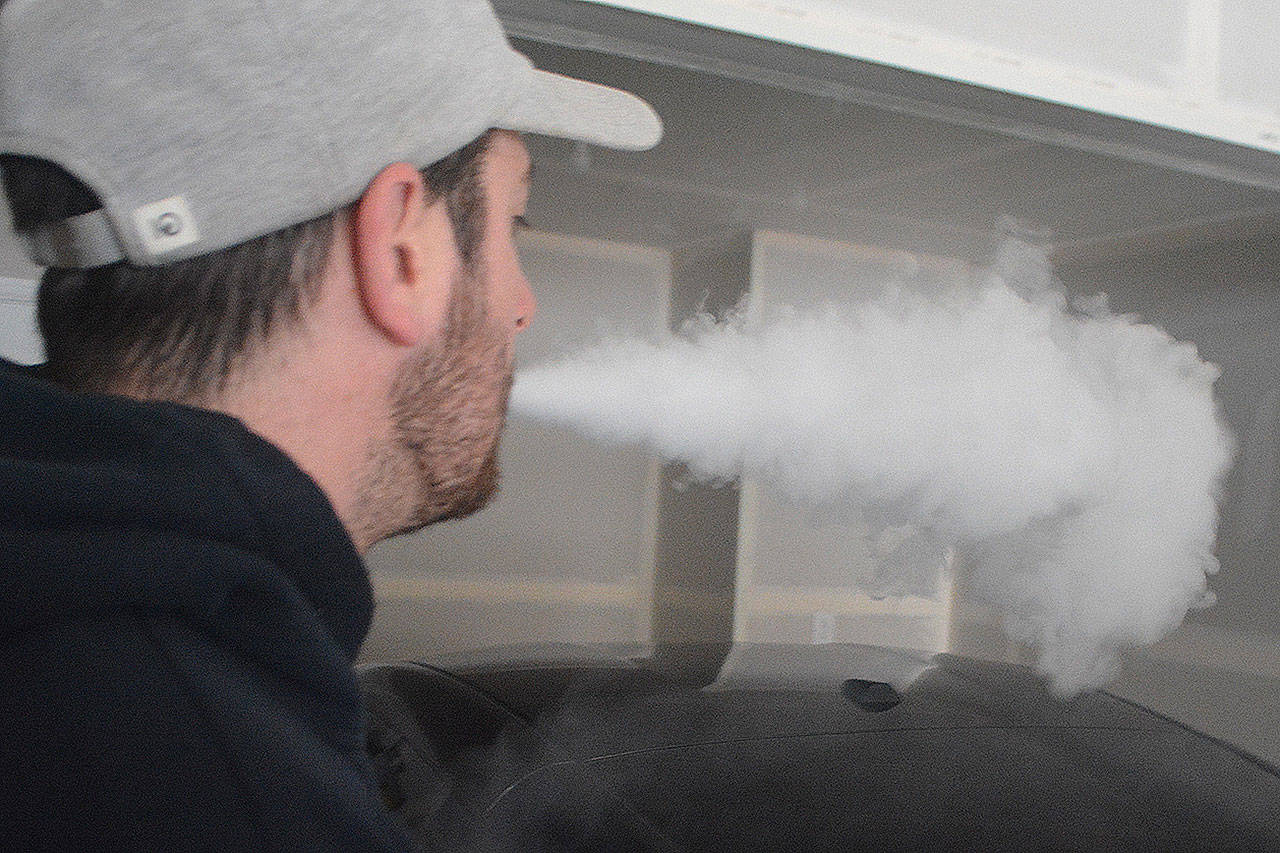Last of 2 parts
By Steve Powell
Even though according to a youth survey vaping is popular in Marysville, the school district said it hasn’t been much of an issue thus far.
“That’s not to say that it doesn’t happen, its just not happening at an alarming rate,” said Greg Dennis, the district’s safety director.
He added vaping does seem to be pretty consistent in both middle and high school.
“We do take the vapes away, as well as any juices or vape accessories,” Dennis said, adding appropriate consequences are given for students that vape or are in possession of vapes.
Because it’s not a major problem at school, the district has not purchased rest room vape detectors or cameras outside bathrooms. The district is planning to get cameras for a number of security reasons.
“We have limited cameras at this time, but are working on adding cameras to our campuses soon,” Dennis said. “Secondary schools will be addressed first, with elementary schools to follow.”
As for learning about the dangers of vaping, Dennis said he didn’t know of any curriculum in health or elsewhere. However, there are posters all around schools warning students about the dangers of vaping.
“With all the recent publicity surrounding the dangers of vaping (and the multiple vape-related deaths), students are hopefully more aware than ever of these hazards,” he added.
Even though it’s not a problem in school, that doesn’t mean local students aren’t vaping. In a youth survey in 2018, with 420 seniors participating, they said 38 percent had tried vaping, while only 8 percent had smoked cigarettes. Of those, 62 percent had vaped using nicotine, 30 percent tried flavored nicotine and 17 percent used marijuana. Of the students who vaped, 38 percent said they are American Indian/Alaska Native, 35 percent multi-racial and 33 percent white.
Steps are being taken nationwide to slow the epidemic, which has abruptly changed an almost 60-year decline in smoking.
This month’s Time magazine article says the Food and Drug Administration in September threatened Juul with fines and product seizures if it kept promoting e-cigarettes as being safer than traditional cigarettes. It says in eight months, unless e-cigarette companies can prove they protect public health, the products could be pulled from the market. Companies claim they are beneficial for longtime smokers. They contain fewer toxic chemicals, including carcinogins, than cigarettes. But the effects of other ingredients are not known as Juul started during a regulatory loophole in the FDA system and hit the shelves without having to deal with strict FDA regulations, Time reported.
According to the Marysville School District Healthy Youth Survey:
6th grade: In 2018, with 615 students participating, they said:
•1% tried cigarettes and 4% tried vaping.
•7% of Native Hawaiian/Pacific Islanders tried it.
8th grade: In 2018 with 551 students participating:
•4% tried cigarettes, 13% tried vaping.
•16% of hispanics, and 15% multi-racial and American Indian/Alaska Native, and 14% black or African American tried it.
•44% vaped with nicotine, 29% with flavored nicotine and 24% marijuana.
10th grade: In 2018 with 550 students participating
•6% tried cigarettes, 24% tried vaping.
•28% American Indian/Alaska Native, 26% multi-racial and 24% white.
•59% vaped with nicotine, 29% with flavored nicotine and 22% marijuana.
12th grade: In 2018 with 420 students participating.
•8% tried cigarettes, 38% tried vaping
•38% of American Indian/Alaska Native, 35% multi-racial, 33% white.
•62% tried with nicotine, 30% flavored nicotine and 17% marijuana.
Fast facts
•Tobacco use remains the leading cause of preventable death and disease in the state.
•104,000 Washington youth today will ultimately die prematurely from smoking.
•The effects of nicotine exposure in youth can include lower impulse control, mood disorders and brain damage.
•The minimum age to buy such products is going up to 21 in January 2020, but youth can still get them from older friends and adults.
In Arlington
Stilly Valley Health Connections is hosting a 3-hour training-of-the-trainer-style workshop to introduce the concepts and devices for vaping nicotine and marijuana. Training is provided by representatives from the American Lung Association and Snohomish Health District. Classes are for school administrators and educators, health care professionals, community members and youth leaders, as well as anyone interested in learning more about the dangers of e-cigarette use.
The next free workshop is Nov. 13th from 5:30-8:30 p.m. It is at Stilly Valley Health Connections, 875 Wesley St., Suite 240.
Sign-up link is at www.stillyvalleyhealth.org or call Stilly Valley Health Connections at 360-386-9918.



